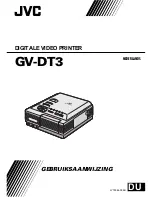
Website:
https://www.idig3dprinting.co.uk
email: [email protected]
•
Calibrate the printer steps (See manual)
. If the steps/mm are off for the stepper
motors this can result in dimensional inaccuracies. It also means that the
extrusion beads are closer together than they should be so material may not have
stretched as it should and the interface layer between raft and part may stick
more than it should. Open the Calibrate96.stl found in C:/program
files/UP/samples, print this on default settings, go to >3D Print>Calibrate on the
UP software toolbar and type in the measured dimensions.
•
Print Cylinders vertical
. For a better, more rounded shape to cylinder try printing
them vertically. If this is not possible try increasing the angle of support to 45°
and also selecting "Unsolid model" before printing.
•
Disconnect the USB cable
. Earthing and electrical interference issues at certain
locations (e.g. the PC is connected to a different mains than the printer) have
been known to cause strange behaviour of the printers. Try disconnecting the USB
cable once it has started printing. The printer stores it's instructions on an
internal SD card so will continue printing when disconnected from the PC
software.
•
Check the SD card
. Make sure that the SD card is clean and inserted correctly
(this is probably best left until last if all other checks haven't improved things).
4. Layer delamination
3D printing involves the building objects out of layers. One issue that can arise is layer
delamination, or gaps between layers. Delamination can be reduced by following the
same procedure in section 2 on “Warping”. You can try looking at some of the below
suggestions to reduce this anomoly:
•
Pre Heat the bed
.
•
Use the latest software.
•
Run the platform calibration routine.
•
Increase layer height.
•
Reduce the number of perimeters (reduces print time).
•
Change quality to “Fast”.






















